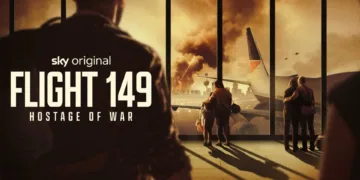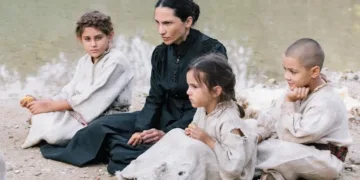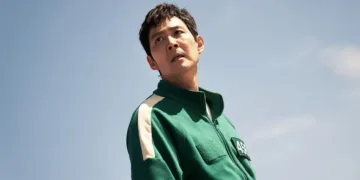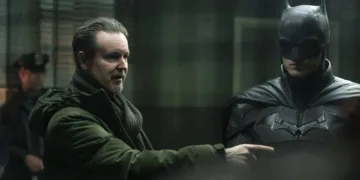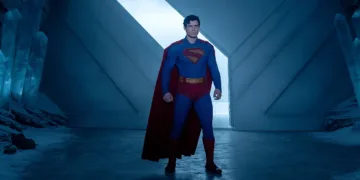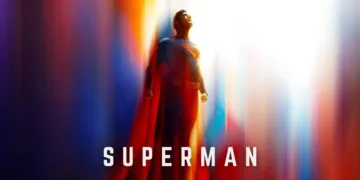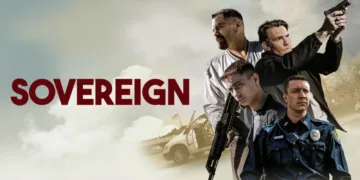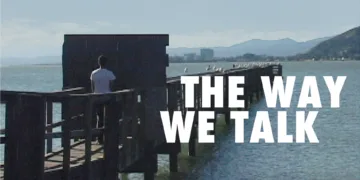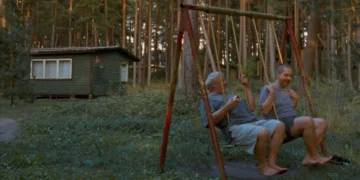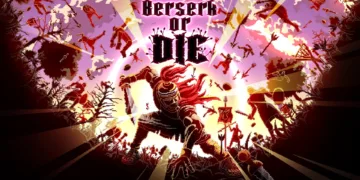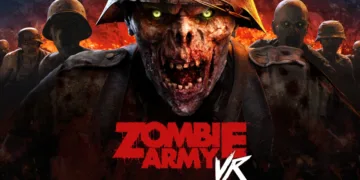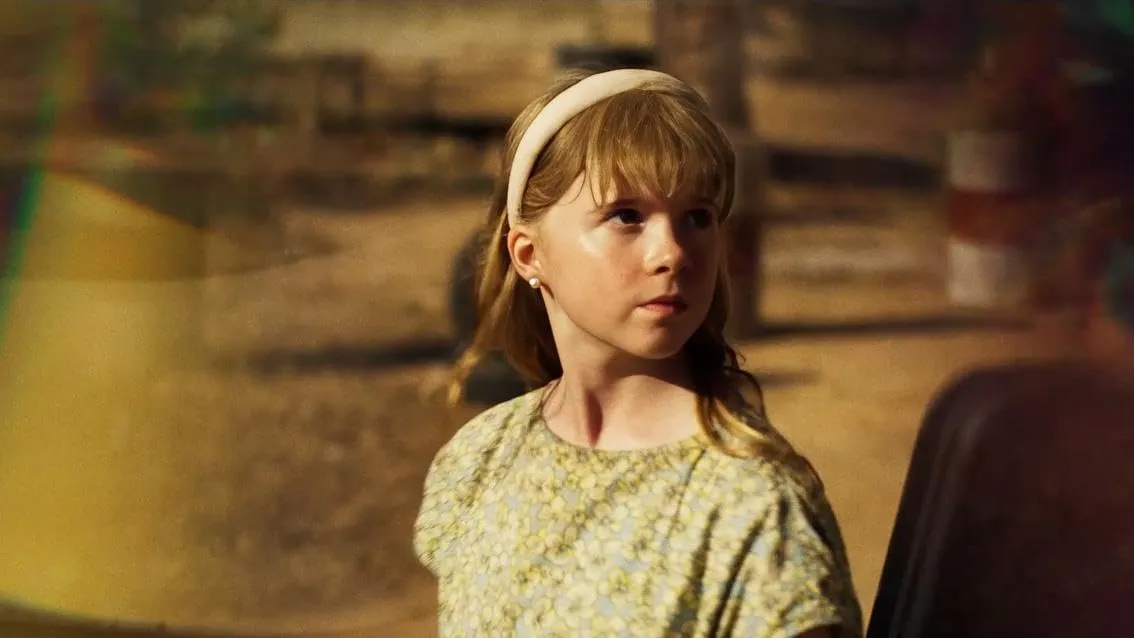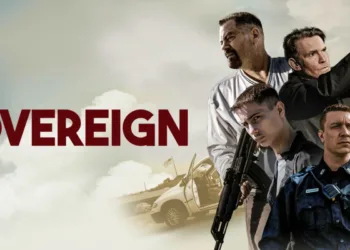There’s a reason some stories take decades to tell properly. Jenny Ash’s documentary “Flight 149: Hostage of War” excavates one of those buried historical moments that sounds too nightmarish to be real.
On August 2, 1990, British Airways Flight 149 made what should have been a routine refueling stop in Kuwait City. Instead, nearly 400 passengers and crew found themselves trapped in the opening hours of Saddam Hussein’s invasion of Kuwait, becoming unwitting human shields in what would escalate into the Gulf War.
The central question haunting this film—and its survivors—is deceptively simple: why was this commercial flight allowed to land in a war zone? For four months, these ordinary travelers endured extraordinary horrors while their governments offered shifting explanations and bureaucratic double-speak.
Ash’s film operates as both investigative journalism and human testimony, peeling back layers of official secrecy to reveal a story that feels like a political thriller but carries the weight of lived trauma. The documentary doesn’t just recount history; it actively challenges the official narrative while giving voice to those who were silenced for too long.
Constructing Truth From Fragments and Testimony
Ash employs a documentary structure that mirrors the fragmented nature of memory itself. The film weaves together survivor interviews, archival footage, and carefully crafted reconstructions in a way that feels both investigative and deeply personal.
What sets this apart from standard talking-head documentaries is Ash’s decision to have survivors speak directly to human rights lawyers from McCue Jury & Partners, creating an atmosphere that feels part therapy session, part legal deposition.
The archival material—grainy news bulletins, Teletext updates, and period footage—serves as more than historical context. It becomes a time machine, transporting viewers back to an era when information moved differently, when people relied on evening news and morning papers to understand global events.
There’s something haunting about seeing those primitive digital displays announcing invasion updates, knowing that passengers were experiencing these events not as distant news but as immediate, life-threatening reality.
The dramatic reconstructions deserve particular attention. Rather than sensationalizing trauma, Ash uses these recreated scenes to convey psychological states that interviews alone cannot capture. The hazy, dreamlike quality of these sequences mirrors the dissociation many survivors describe. When we see a young actress portraying Jennifer Chappell singing along to Guns N’ Roses’ “Paradise City” while imprisoned, it’s not exploitation—it’s empathy made visual.
The film’s structure builds tension methodically, presenting evidence piece by piece like a courtroom drama. This pacing serves the subject matter well, allowing viewers to process the horror gradually while maintaining engagement. The documentary functions simultaneously as entertainment and evidence-gathering, serving the legal case while honoring the human cost.
Voices That Echo Across Decades
The heart of “Flight 149” lies in its survivor testimonies, and Ash treats these accounts with the reverence they deserve. Charlie Kristiansson, the former British Airways steward, provides some of the most harrowing testimony.
His account of sexual assault by an Iraqi soldier is presented with unflinching honesty, but never feels exploitative. The camera captures his physical reactions—the way he flinches while recounting the attack—reminding us that trauma lives in the body long after events have passed.
Jennifer Chappell’s story hits differently because we see her both as she was—a 12-year-old girl trying to make sense of incomprehensible violence—and as she is now, an adult still grappling with PTSD and borderline personality disorder. The image of her finding solace in rock lyrics scrawled on prison walls becomes a powerful metaphor for how people create meaning from chaos. Her suicide attempts speak to the ongoing cost of unresolved trauma.
Perhaps most heartbreaking is the story of Barry Manners and Anthony Yong. Their separation during captivity—Yong smuggled to safety disguised as an Indian cleaner while Manners remained behind—illustrates how the crisis tore apart not just individuals but relationships. Yong’s death shortly after returning to the UK, his health compromised by the ordeal, represents the ultimate cost of governmental indifference.
These testimonies work because they’re specific. We don’t just hear about “harsh conditions”—we hear about walls smeared with excrement, about mock executions, about the mundane details that make horror real. The survivors’ resilience shines through not in spite of their trauma but because of how they’ve chosen to speak about it. Their willingness to relive these experiences on camera becomes its own form of courage.
Conspiracy, Accountability, and the Search for Truth
The film’s political dimensions elevate it beyond mere historical documentation. The allegation that Flight 149 served as a “Trojan horse” for British intelligence operations transforms the narrative from tragic accident to potential conspiracy. The mysterious passengers who allegedly boarded in London—described as having military bearing—become central to questions about what the government knew and when.
Investigative journalist Stephen Davis provides crucial context, his decades of reporting lending credibility to claims that officials have long dismissed. The timeline controversy—when exactly did the British government learn of the invasion?—becomes a focal point for accountability. The government’s admission in 2021 that it had information before the flight landed represents a crack in the official story, one that survivors have been trying to widen for decades.
The class-action lawsuit against British Airways and the government serves as both background and foreground to the film. These aren’t just historical interviews—they’re legal testimonies that could reshape how we understand governmental responsibility to citizens. The documentary becomes part of the legal process, its very existence serving as evidence of ongoing harm.
What makes this political intrigue compelling is how it grounds abstract concepts of state power in human consequences. This isn’t just about intelligence operations or diplomatic failures—it’s about real people who paid the price for decisions made in closed rooms. The film raises uncomfortable questions about how governments balance national security against citizen welfare, and whether transparency is possible when intelligence operations are involved.
Flight 149: Hostage of War is a documentary that premiered on June 11, 2025, on Sky Documentaries and the Sky streaming service, NOW.
Full Credits
Director: Jenny Ash
Producers: Andy Holland, Helen McClure, Mowaffaq Safadi, Lucy Towers
Executive Producers: Sam Bagnall, Laura Botten, Mark Henderson, Karen Kelly, Poppy Dixon, Vesna Cudic, Tom Barry
Cast: Fahad Al-Baghli, Manar Al-Dossari, Jack Beeston, Jennifer Chappell, Stephen Davis, Clive Earthy, Ash Goldeh, B George, Matthew Jury, Charlie Kristiansson, Martin Loesche, Preston Saloom, Barry Manners, Tony Paice, Deborah Saloom, George Saloom, Jennifer Sayles
Director of Photography (Cinematographer): Jamie Cairney
Editors: Rick Barker
Composer: Alexander Parsons, Ollie Howell
The Review
Flight 149: Hostage of War
Jenny Ash has crafted a documentary that succeeds both as investigative journalism and human testimony. "Flight 149: Hostage of War" transforms a buried historical incident into urgent contemporary questions about accountability and truth. The film's power lies in its refusal to let this story remain hidden, giving survivors the platform they've long deserved while building a compelling case for justice. This is essential viewing for anyone interested in how power operates in the shadows.
PROS
- Powerful survivor testimonies handled with respect and dignity
- Excellent use of archival material and reconstructions
- Compelling investigation into government accountability
- Strong documentary craftsmanship and pacing
CONS
- One-sided presentation due to government/BA non-participation
- Some reconstruction sequences feel slightly staged
- Legal proceeding format occasionally interrupts narrative flow
